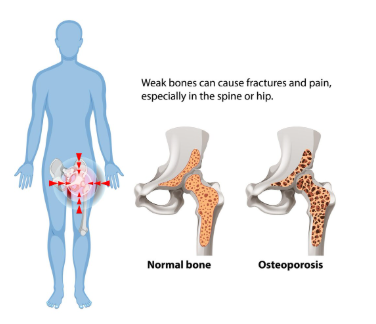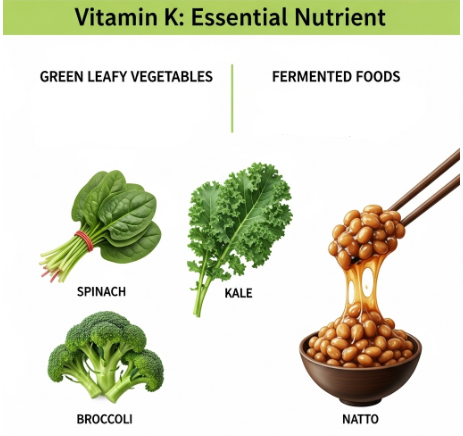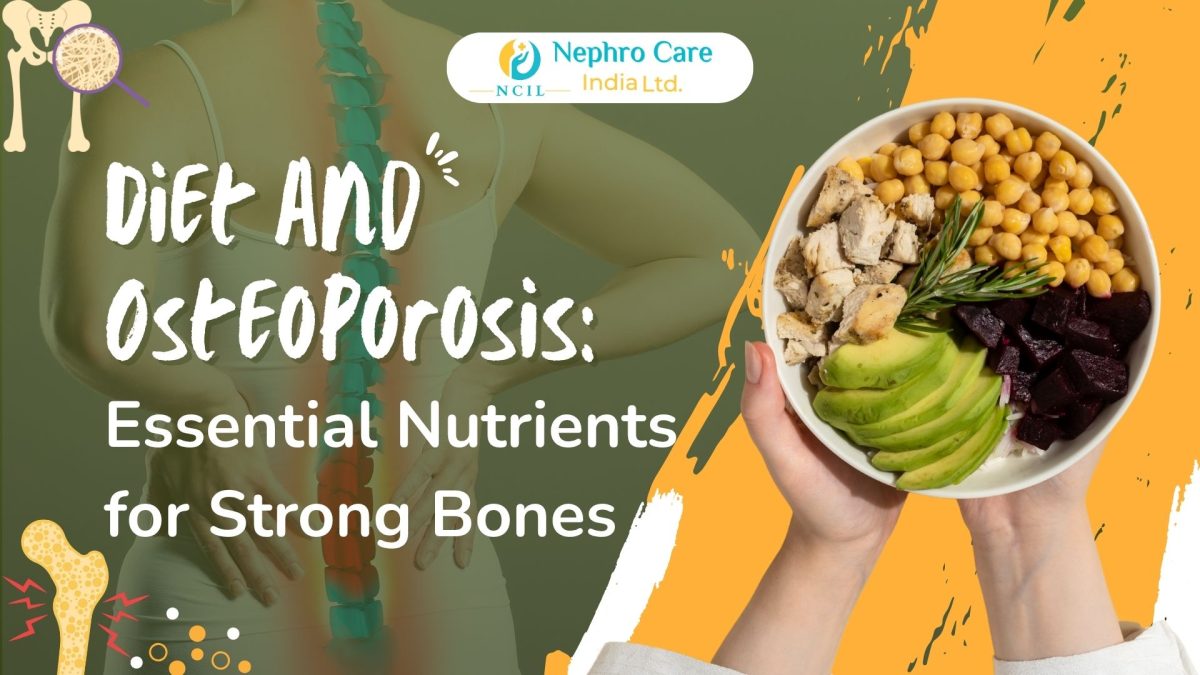Imagine your bones as the silent framework that holds your body tall and strong every single day. You can’t see them, but they’re doing some of the most important work for you.
Now picture this: what if that framework was slowly weakening, and you didn’t even know it?
Osteoporosis is a silent condition that weakens bones over time, making them fragile and more prone to fractures. It occurs when bone loss outpaces the formation of new bone, resulting in a porous, brittle structure.
But here’s the good news: your diet plays a powerful role in protecting your bones at any age.
🔍 Understanding Osteoporosis
Osteoporosis is a condition in which bones lose density and mass, increasing the risk of fractures, particularly in the hips, spine, and wrists. It often progresses without symptoms until a break occurs, which is why prevention is key.

🚫 Risk Factors for Osteoporosis
Non-Modifiable Risk Factors (Things You Can’t Change)

| Risk Factor | Explanation |
| Age | Risk increases after age 50-60, especially post-menopause |
| Sex | Women—especially postmenopausal—are at higher risk |
| Family History | A genetic predisposition or history of fractures in parents |
| Ethnicity | Caucasian and Asian populations face higher risk |
| Body Frame Size | Smaller individuals have less bone mass to lose |
✅ Modifiable Risk Factors** (Things You Can Change)

| Risk Factor | Explanation |
| Low calcium intake | Reduces bone density and accelerates bone loss |
| Vitamin D deficiency | Impairs calcium absorption and bone strength |
| Lack of exercise | A sedentary lifestyle weakens bones |
| Smoking | Decreases bone mass and deteriorates bone tissue |
| Excess alcohol intake | Interferes with calcium and vitamin D metabolism |
| Low body weight | Increases fracture and bone loss risk |
| Poor nutrition | Lack of essential nutrients undermines bone health |
| High caffeine/sodium | Increases calcium loss via urine |
Essential Nutrients for Strong Bones
1. Calcium

- Why it matters: The main building block of bone tissue.
- Top sources:
- Dairy: Milk, yogurt, cheeseLeafy greensFortified foods (plant-based milks, cereals)
- Canned fish with bones (sardines, salmon)
2. Vitamin D

- Why it matters: Boosts calcium absorption in the body.
- Top sources:
- Fatty fish (salmon, mackerel)
- Fortified milk and plant milks
- Egg yolks
- Sunlight exposure (15–20 mins a day)
3. Protein

- Why it matters: Supports bone structure and muscle strength.
- Top sources:
- Lean meats, fish, eggs
- Dairy products
- Legumes, nuts, seeds
4. Magnesium

- Why it matters: Aids bone mineralization and calcium regulation.
- Top sources:
- Nuts (almonds, cashews)
- Whole grains
- Leafy vegetables
- Avocados
5. Vitamin K

- Why it matters: Essential for bone metabolism and calcium binding.
- Top sources:
- Green leafy vegetables (spinach, kale, broccoli)
- Fermented foods (natto)
6. Phosphorus

- Why it matters: Works alongside calcium to build strong bones.
- Top sources:
- Dairy products, egg yolk
- Whole grains, legumes, nuts
7. Omega-3 Fatty Acids

- Why it matters: May reduce inflammation and bone loss.
- Top sources:
- Fatty fish (salmon, sardines)
- Flaxseeds, chia seeds, walnuts
Low in Vitamin D? Speak to a nutritionist to learn how a balanced diet can help you recover naturally. Call +91 6292 266 878.
⚠ Nutrients and Substances to Limit
| Substance | Why Limit It | Examples |
| Sodium | Causes calcium loss through urine | Salty snacks, processed foods |
| Caffeine | High intake may reduce calcium absorption | Coffee, tea, cola |
| Alcohol | Interferes with calcium and vitamin D metabolism | More than 1 drink/day (women), 2 (men) |
| Phosphoric Acid | Upsets calcium-phosphorus balance | Cola and carbonated soft drinks |
✅ Conclusion
Osteoporosis might not always show early signs, but its impact on life quality is significant. The good news? A nutrient-rich diet, combined with lifestyle changes, can significantly lower your risk. Prioritizing calcium, vitamin D, protein, and other bone-friendly nutrients—while limiting harmful substances—will help you build and maintain strong bones for life.




